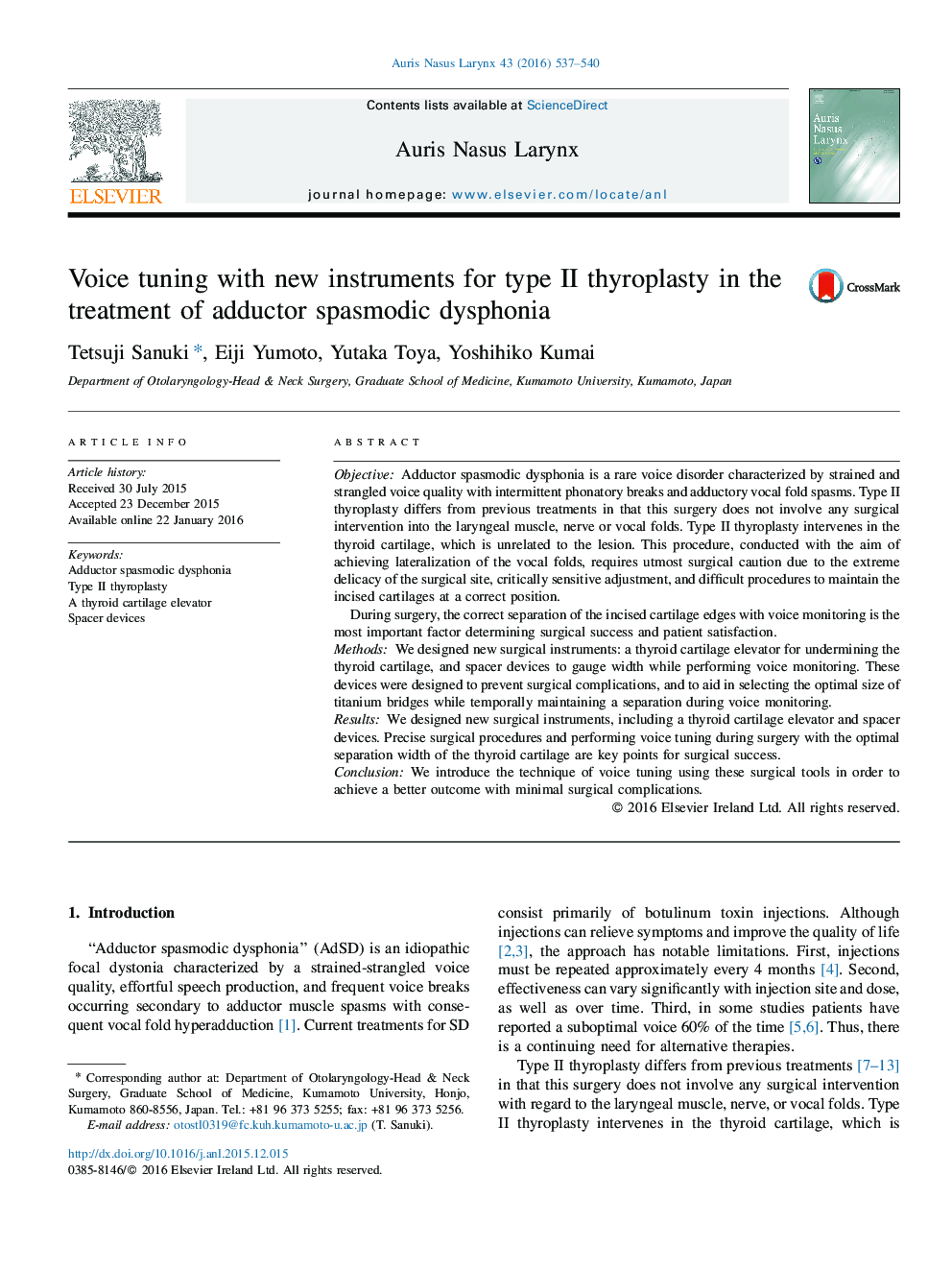| Article ID | Journal | Published Year | Pages | File Type |
|---|---|---|---|---|
| 3459253 | Auris Nasus Larynx | 2016 | 4 Pages |
ObjectiveAdductor spasmodic dysphonia is a rare voice disorder characterized by strained and strangled voice quality with intermittent phonatory breaks and adductory vocal fold spasms. Type II thyroplasty differs from previous treatments in that this surgery does not involve any surgical intervention into the laryngeal muscle, nerve or vocal folds. Type II thyroplasty intervenes in the thyroid cartilage, which is unrelated to the lesion. This procedure, conducted with the aim of achieving lateralization of the vocal folds, requires utmost surgical caution due to the extreme delicacy of the surgical site, critically sensitive adjustment, and difficult procedures to maintain the incised cartilages at a correct position.During surgery, the correct separation of the incised cartilage edges with voice monitoring is the most important factor determining surgical success and patient satisfaction.MethodsWe designed new surgical instruments: a thyroid cartilage elevator for undermining the thyroid cartilage, and spacer devices to gauge width while performing voice monitoring. These devices were designed to prevent surgical complications, and to aid in selecting the optimal size of titanium bridges while temporally maintaining a separation during voice monitoring.ResultsWe designed new surgical instruments, including a thyroid cartilage elevator and spacer devices. Precise surgical procedures and performing voice tuning during surgery with the optimal separation width of the thyroid cartilage are key points for surgical success.ConclusionWe introduce the technique of voice tuning using these surgical tools in order to achieve a better outcome with minimal surgical complications.
